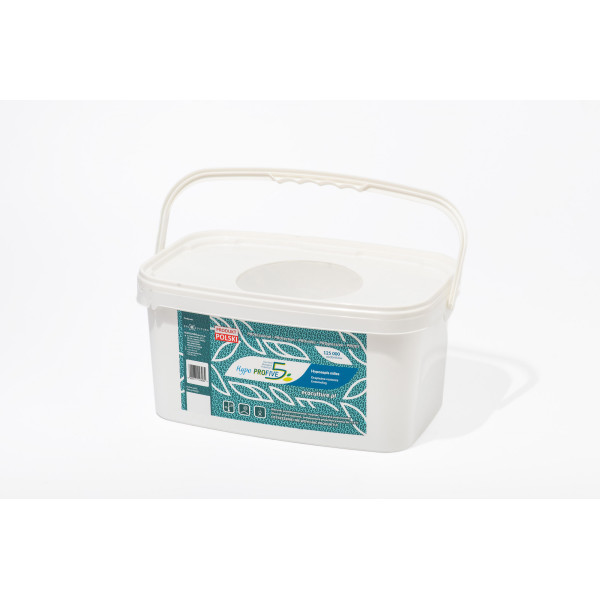What is HYPO PRO5?
Stratiolaelaps scimitus (formerly known as Hypoaspis miles) is a soil-dwelling predatory mite, a polyphagous species that feeds on various small arthropods inhabiting the soil (or substrate). It is widely used in agriculture for controlling thrips and sciarid flies from the family Sciaridae. Adult individuals reach a length of 0.8-1 mm and have a brown coloration. The mite population is mainly found in the upper layers of the substrate (up to a depth of 5 cm) or on its surface, as well as at the base of plant stems. The duration of the developmental cycle "from egg to adult" depends on the substrate, temperature, and food availability, ranging from 9 to 32 days depending on conditions. This species exhibits high reproductive capacity, thrives in crops, and can survive for extended periods even in the absence of prey by feeding on microscopic substrate, making it an incredibly effective tool for pest control. It does not cause plant damage and has no negative impact on the environment, making it safer than using chemical pesticides.
Pests.
Stratiolaelaps scimitus preys on various soil-dwelling pests. It actively hunts the larval stages of thrips and sciarid flies (particularly targeting the younger stages as they become much larger than the mite in later stages). It also attacks the larvae of shore flies (Ephydridae) and springtails (Collembola).
It is recommended for controlling sciarid flies and thrips, especially the onion thrips (Thrips tabaci), western flower thrips (Frankliniella occidentalis), tomato thrips (Frankliniella schultzei), american serpentine leafminer (Echinothrips americanus) and others.
It is also used outside of crop cultivation, such as in terrariums to control the snake mite (Ophionyssus natricis) causing reptile dermatitis, and in poultry farms to control the poultry red mite (Dermanyssus gallinae). Currently, research is being conducted on the effectiveness of Stratiolaelaps scimitus in combating Varroa mites, which are pests of bees in apiaries.
Crops.
Stratiolaelaps scimitus is used in a wide range of crops, including:
• Vegetable crops: cucumber, tomato, pepper, eggplant, zucchini, etc.
• Fruit crops: strawberry, raspberry, blackberry, blueberry, etc.
• Flower crops: rose, chrysanthemum, gerbera, begonia, calla lily, anthurium, etc.
It is also used in mushroom cultivation to control fungus gnats and in other industries.
Application.
It is recommended to introduce the predatory mites in the early growth stage of the plants or immediately after detecting the pests. Before introducing the predators into your greenhouse, thoroughly mix the package (tube or bucket) for several minutes by rotating it around its axis - this will ensure a more even distribution of the predator and thereby increase the effectiveness of the product application.
Stratiolaelaps scimitus is applied to the crop by carefully sprinkling the material containing the predatory mites onto the soil in pots (for container crops) or substrate (blocks, mats). Regardless of the application method, it is important to monitor the temperature and humidity to provide optimal conditions for the survival of the biological control agent. The minimum application temperature for the predatory mite is 15°C.
Application rates.
Optimal application rates for Stratiolaelaps scimitus may vary depending on various factors such as the crop, substrate conditions, pest species, infestation level, presence of other control methods, etc. Generally, these rates range from 100 to 500 predatory mites per 1 m². The procedure should be repeated every 7-14 days.
Please note that optimal application rates may vary depending on multiple factors, so it is advisable to consult with our company's experts before using Stratiolaelaps scimitus to develop an optimal protection strategy.
Storage.
Storage of Stratiolaelaps scimitus should follow specific guidelines to ensure maximum effectiveness of the biological control agent. Here are a few recommendations:
• The maximum storage period for the product from the time of receipt is 1-2 days.
• Store the product in a horizontal position, in a cool place protected from direct sunlight, at a temperature of 12-14°C. It is important to remember to avoid contact with pesticides during storage.
• Storage of the mites in a refrigerator or freezer is prohibited, as it can lead to their death.
There are no reviews for this product, be the first to leave your review.

